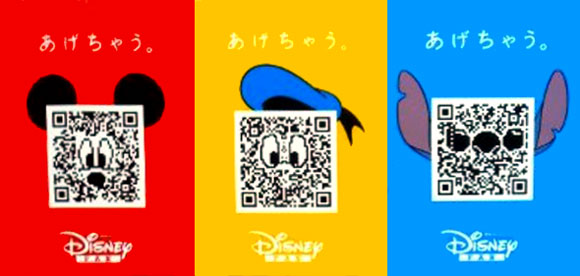This week we are going to talk about the exciting topic of
QR codes. QR codes, short for Quick Response Codes, are essentially two dimensional
bar codes. They were originally created in 1994 by an automotive company to
quickly scan parts for use on the cars. Since then people have found a very
wide variety of uses for them. They can be used to store a url, text message, or
even phone numbers. One of the best features of QR codes is how durable they
are. When created they can be made with up to 30% error correct ability.
Meaning you could damage up to 30% of the code, and it would still be able to
read it.
QR codes are surprisingly simple to create. There are plenty
of websites out there that you can input your desired text, url, or whatever
information you want, and they will spit out the code for you right there. One
of the sites that I found most useful for creating my code was http://goqr.me/.
They allowed me to customize just about everything from what I wanted
linked within the code, to the size of the code, all the way to what level of
error correction I wanted within it. Companies can even get fancy while making
their codes by putting images in the background, splashing different colors
through the code, or even putting their logo right on top of the code itself.
This part was a little tricky so I suggest you get yourself a copy of Photoshop,
and YouTube instructions to help you out.
If you were anything like I was then you knew of QR codes and
saw them around, but you never really saw any purpose to them. It seemed like a
lot of work to have to download a scanner app and take a picture of
it just to get to someone's Facebook page, or get a coupon that they would
probably just let you use if you asked nicely without actually getting it. It
wasn't until I got this assignment to research QR codes and design one of my
own that I really started to understand how great they could be.
The main use of QR codes so far has been to link people to
their company website, or Facebook page to like the company. However people are
coming up with some great uses for them that will make it almost common practice
for everyone to have and use QR codes everywhere. Some of my favorite uses I
found were companies like Google are experimenting using them on websites as a
form of secure login. only if they are scanned by a approved mobile device will
the person be logged into the terminal. Libraries are experimenting using them
inside their books so you could scan them and extend the time you are checking
them out.
In fact after reading
all these ideas I came up with my own. The public library here on campus at SJSU
has rooms on all the floors that you can reserve for study groups. It would be
a fantastic idea if they could put personalized QR codes by the door of each of
them linking you to a website that shows you when the room is reserved by who,
and allowing you to reserve it right there through the code instead of
searching for it online.

Hi Jonathan,
ReplyDeleteNice post about QR codes. I didn’t know that they were so robust, offering up to 30% of a margin of error for readability. I think QR codes have much to offer in the educational realm, but I don’t really see them around campus. Your idea of the library utilizing them for effective conference room scheduling is a great idea. Your blog was also visually interesting, showing that you have a fun personality. And who doesn’t like jellybeans? I invite you to visit my blog as well. Feel free to make suggestions or add to the discussion. I look forward to reading more of your posts!
Hi Jonathan! Nice post on QR codes. I liked how you generalized the idea of QR codes through this blog. You started simple and talked how easily everyone can generate QR codes. This might encourage many people to generate QR codes for their businesses. I also agree with all the uses of QR codes you mentioned in next paragraphs. I liked your own idea on using QR codes to reserve study rooms in SJSU library. However, I notice few grammatical and punctuation errors in your blog. I encourage you to use “criterion” to avoid this small errors. Overall, I enjoyed reading your blog.
ReplyDeleteYour blog discussed how Quick Response(QR) codes started and their use today. In addition, your eloquently use grammar and vocabulary to make the subject of your post entertaining and fun to read. It was interesting to learn how Google and libraries are experimenting with QR codes. Google gives the user permission to log in to the computer, and libraries are using QR codes to allow users to extend books. Your idea for using QR codes for the MLK library room reservation was very original. It is so annoying having to go online, entering the library code, when all that needs to be done is to connect to the web, schedule a room, see who is using it, or cancel the room reservation. In addition, having the library change to its own network would speed up the internet.
ReplyDelete